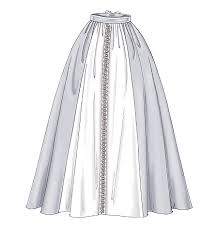
The Renaissance Period emerged during the 14th century in the northern Italy and spread to the rest of Europe in late 15th century. Renaissance was a period of new ideologies which changed the culture of the English people. During the Renaissance Period arts, science, literature and philosophy gained importance and eminence.
English Renaissance:
The English Renaissance was a cultural movement in England beginning from late 15th – early 16th century to the early 17th century. It is related with the Renaissance movement in Italy duriing the late 14th century. Like much of the northern Europe, England experienced very few of these developments until more than a 100 years later.
The beginning of the English Renaissance is said, roughly, to be 1485, when the Tudor Dynasty was introduced, Renaissance style and ideology were slow to enter England. The Elizabethan era in the later half of 16th century is usually considered as the high of the English Renaissance.
Art of English Renaissance:

Renaissance Period onwards number of foreign artists were brought in by the nobility, mainly for portraits. though, with the Elizabethan portrait miniaturists an English art of exquisite delicacy came into being.

During this period artists were experimenting with new techniques, in medium (oil paints for example) and style, discovering the principles of perspective. Artists learned from classical art.The new intellectual idea of humanism created a new emphasis in all theatre arts including plays and dramas.
Manor houses and palaces were designed for better comfort than in previous periods and were arranged symmetrically, facing outward towards the beautiful garden. Attention was paid to the panelling and interiors. English builders adapted Italian designs, specially the published work of ‘Sebastiano Serlio’.
Fashion of English Renaissance:
Renaissance costumes reflected the ongoing progressing culture. The increasing trade gave more options for clothing material. The Nobility dressed in bright and ornamental robes, gowns and other vestments.
Embroidery of gold and silver threads were sewn in the garments to form designs illustrating scenes from epics, nature or religion. The upper class decked themselves in elaborate jewellery, belts and fur.
The upper class restricted silk for lower class, peasants were prohibited to even possess silk. They were allowed to wear garments made of cotton, muslin etc. The lower class also called the Peasant class were made to wear off-white clothes instead of white.
Fashion was a big status symbol during the Renaissance. The wealthy literally wore their wealth as the elaborate expensive clothing helped authorise an image of wealth for the owner. It was the wealthy or ruling class that led the fashion.
Some pieces of Renaissance clothing are listed below:
- Bum Roll: a roll made of cloth used as a padding tied around the hip line to hold the skirt out from the body. (women)
- Bodice: clothing that covers the body frrom neck to waist. (women)
- Doublet: a tight fitted jacket with padded sleeves. (men)
- Petticoat: An underskirt worn under the skirt or dress. (women)
- Jerkin: short sleeveless leather jacket. (men)
- Ruff: Stiff (starched) collar wired and pleated to form a circular shape.
- Stomacher: stiff ornamented triangular cloth worn in front of the bodice from neckline to lower abdomen. (women)
Images:






